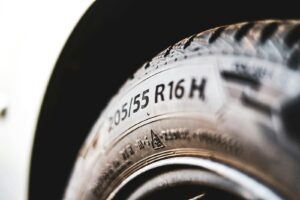Study gives damning verdict on shipping industry pollution
46 cruise ships operated by Carnival Corporation emitted almost 10 times as much sulphur oxide (SOX) around European coasts than 260 million European cars in 2017, new analysis has revealed.
Sustainable transport group Transport & Environment studied the emissions of 203 cruise ships travelling throughout Europe for the report, which paints a worrying picture of an industry that they say has been slow to reduce pollution.
Spain, Italy and Greece, closely followed by France and Norway, are the European countries most exposed to SOX air pollution, which is associated with reduced lung function, respiratory diseases and early death.
Barcelona, Palma de Mallorca and Venice are the most impacted European port cities, followed by Rome and Southampton.
In 2017, the 203 ships emitted 62 kilotons of SOX, 155 kilotons of nitrogen dioxide (NOX), 10 kilotons of particulate matter (PM) and over 10 metric tons of carbon dioxide equivalent (MTCO2).
Most of these emissions took place in the Mediterranean Sea and other major tourist destinations, but also along the coasts of the key member states.
NOX emissions from cruise ships in Europe also heavily impact some cities, equivalent to about 15% of the nitrogen oxides (NOX) emitted by Europe’s passenger car fleet in a year, the report finds.
In Marseille during 2017, 57 cruise ships emitted almost as much NOX as one-quarter of the city’s 340,000 passenger cars. Along the coasts of countries such as Norway, Denmark, Greece, Croatia and Malta a handful of cruise ships are also responsible for more NOX than the majority of their domestic car fleet.
Faig Abbasov, shipping policy manager at T&E, called the findings ‘unacceptable’.
‘Luxury cruise ships are floating cities powered by some of the dirtiest fuel possible,’ he said.
‘Cities are rightly banning dirty diesel cars but they’re giving a free pass to cruise companies that spew out toxic fumes that do immeasurable harm both to those on board and on nearby shores.’
According to the report, shipping remains the least regulated transport sector for sulphur emissions. The best marine sulphur standard (0.1% | 1000 ppm) remains 100 times worse than Europe’s sulphur standard for road diesel/petrol (0.001% | 10 ppm) in place for the past 15 years.
The pressure group has called on the EU to implement a marine tax on fuel, mandate zero emission berth standard in European ports and consider zero emission control areas in EU waters, especially in the major tourist destinations.
In January, the UK’s Department for Transport (DfT) published the first-ever maritime strategy, which details their vision of a zero-emission shipping industry by 2050.
In it, the government said they are considering introducing targets to drive down emissions of GHGs and other air pollutants from UK shipping as ‘the volume of global trade increases.’
They also say they hope to have a group of hydrogen or ammonia powered domestic vessels in operation and at least one major ‘smart port’ in the UK to have all ship-side activity zero emission (including non-road mobile machinery like cranes).
Photo credit – Pixabay.















